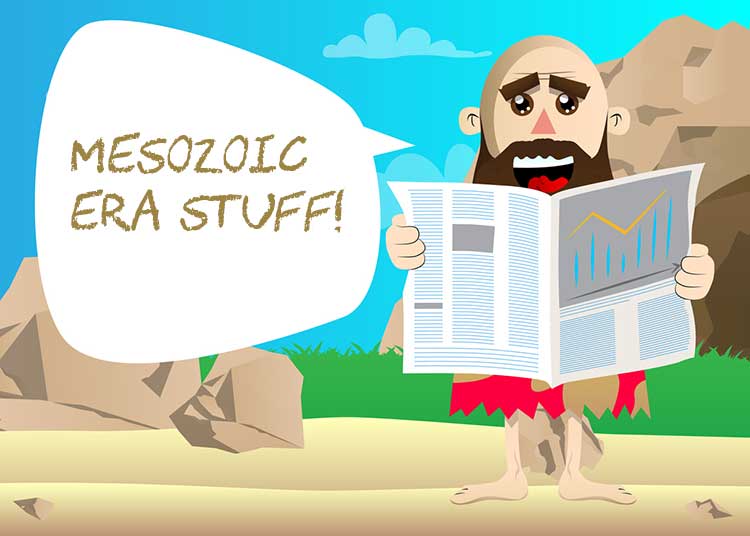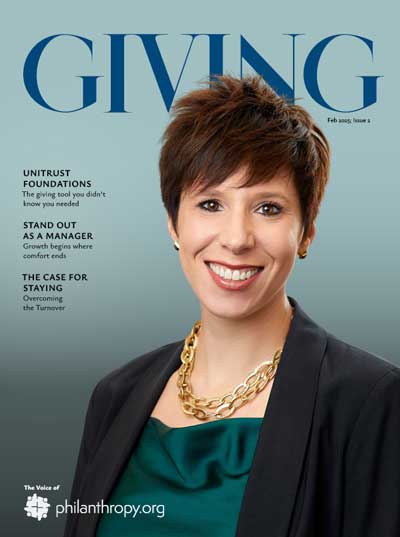Do you want to learn more about planned giving newsletters for your nonprofit? If so, you’ve come to the right place. But be forewarned: below is a lot of information and “work.” If you want to go straight to the chase, consider our Planned Giving Newslets. If you are developing your newsletters in house, here’s a good source for newsletter content.
Everyone is particular about where to give, how to give, whether to give, or how much to give. In this market, fundraisers have to work smarter and make the most of the marketing tools they have.
Some of the best of these tools are planned giving newsletters. Really. But not your grandfather’s planned giving newsletter...
I recently heard a vendor recommend improving planned giving newsletters by using the “right” font, type size, paper, number of pictures, etc. This print-oriented mentality misses the forest for the trees. And it is headed for extinction along with the traditional “place-my-logo-and-name-here” canned-content dinosaur newsletter that worked back in the 60s.
Today there’s zero tolerance for the blah.
First Things First
[Read the Definitive Guide to Planned Giving Newsletters]
If you want your planned giving newsletters to succeed, the first thing you should focus on is your mailing list, not the newsletter. The quality of your list is where you start because it represents 50% of your potential promotional impact.
Have your general list professionally analyzed to extract your most loyal donors. There are many tools that can do this. If your budget won’t stretch that far, the next best thing for you to do is identify donors who have given at least 8-12 times in the last 15 years, regardless of amount. This list will be manageably smaller than your overall list, thus enabling you to target your planned giving prospects more effectively, consistently, and economically. Loyal donors make the best planned giving prospects.
Instant Relevance
Next comes your message. Give that 40% of your attention. Forget blather about the features and technical aspects of planned gifts. Your prospect is not dying (excuse the pun) to read details on how to part with her wealth after her death.
Focus on the benefits of planned gifts and include news your reader can use, because that kind of content lets the readers know “what’s in it for them.” Engage and interest them by addressing their concerns.
And lose the technical jargon. Believe it or not, 9 out of 10 Americans do not know the meaning of “bequest” or “bestow”. So keep your planned giving newsletters simple, and you’ll keep your readers.
Remember to use humor to help get your point across. Your readers will appreciate a funny column now and then. Humor communicates!
Finally, the look and feel — the graphic design of the newsletter — rates at only 10% importance, so don’t bother trying to win a design award. Spending too much time at this end of the equation means you’ve got your priorities backwards.
His Response Rate Went Up
A few years back, a colleague of mine, Brian Sagrestano, killed most of a 40,000-newsletter quarterly mailing that his organization, University of Pennsylvania, was making.
He pared his mailing list down to the 3,900 most loyal donors. Then he developed a useful, fun-to-read newsletter. It included columns such as what is necessary to prepare one’s will, how to protect important documents while traveling, and other information anyone could appreciate and benefit from. Finally, he included focused, benefits-based planned giving articles such as How to Establish an Endowed Scholarship With a Gift That Costs Nothing During Your Lifetime.
The result? Even after eliminating more than 90% of his mailing list, Brian saw his response rate actually increase.
“This was not a huge leap of faith for [Penn marketing guru] Colleen Elisii and me,” Brian explains. “The costs for the newsletter were exceptionally high and the yield was incredibly low. Changing the focus to a donor-centered approach inspired loyal donors to want to help. They were much more interested in what we were saying.”
Smart Content Builds Readership for Your Planned Giving Newsletters
These tactics are nothing new. It’s just that businesses do it better than non-profits because most non-profits do not think like a business.
For example: next time you receive a newsletter from Aetna or Blue Cross, notice the balanced content: advice for diabetics, articles on dealing with the flu and keeping your weight down — and then some material promoting the company’s services.
If the entire publication was an “ad,” it would lose readership. Instead, Blue Cross and Aetna grow their readership with engaging content. Same goes for your newsletter. Include interesting stuff from your interesting organization, not just planned giving boilerplate and donor stories.
Easy is Not Good Enough
Old-style planned giving newsletters were simple to produce. You sent your picture and a cover letter to a vendor, who dropped in your name and logo, added canned content, and mailed off your “exciting” newsletter.
Today, those newsletters don’t get read.
To do your newsletter right takes time, and outsourcing it can become cost-prohibitive because the vendor has to learn more about your organization, your mission, your vision. This takes money.
And regardless of effort and cost, do you think a vendor could really replicate your passion?
So, if your budget allows, work with a good vendor you can trust. Or develop your newsletter with your own team, in-house. Because building these competencies will really pay you back over time.
Finally…
When it comes to mailings of any kind, remember:
- Frequency. As many touches per year as you can. Planning on just one? Don’t even bother.
- Consistency and Constancy. Materials should arrive as expected on a regular schedule. No interruptions, lapses, or gaps.
- Time. It takes a while for your newsletter to gain momentum. Interruptions? You will have to start again.
- Diversity. Use different media. Mix newsletters with postcards and solicitation letters, for example, or place an “advertorial” in your monthly publication.
- Creativity. Be entertaining and interesting. Make it fun. But do not compromise your message.
- Quality. Include informational, educational, interesting “stuff.” Quality isn’t easy but it is crucial.
It will never be Entertainment Weekly
Planned giving just isn’t sexy. It doesn’t have the “pulling” power to draw prospects by itself, so it’s your job to “push” the message through. And given that 72% of Americans still prefer to receive information via US Mail, donor-centric newsletters represent a powerful marketing strategy to get the job done.
…………………………….
RELATED:
If your budget does not allow outsourcing your newsletters, then download some of our columns and articles in addition to featured gift descriptions. (You’ll probably find our one article You Don’t Need a Will amusing yet educational.) By using our ready-to-go-content, you’ll at least be on the right track and cutting costs at the same time.
Category: Planned Giving Marketing



